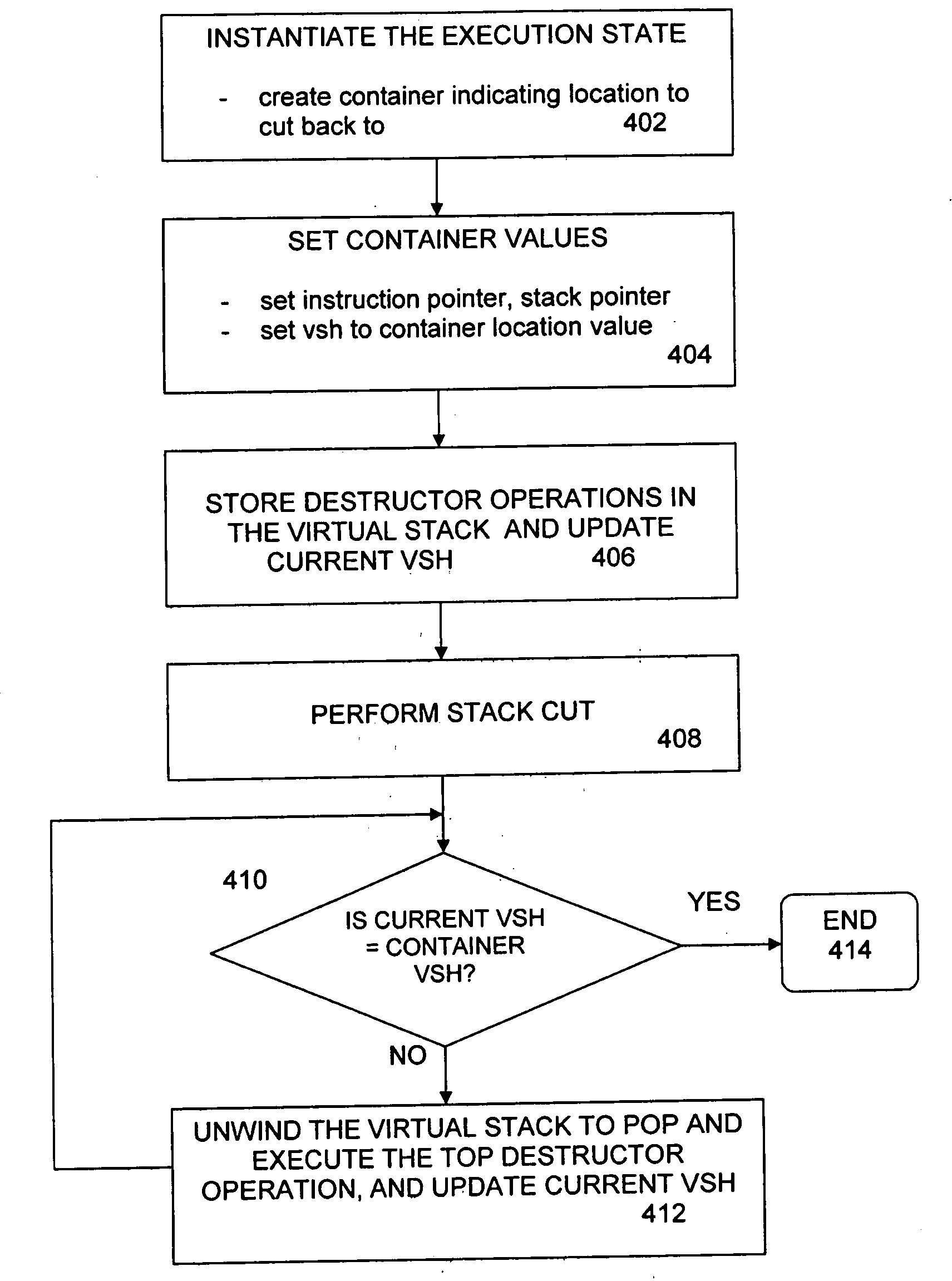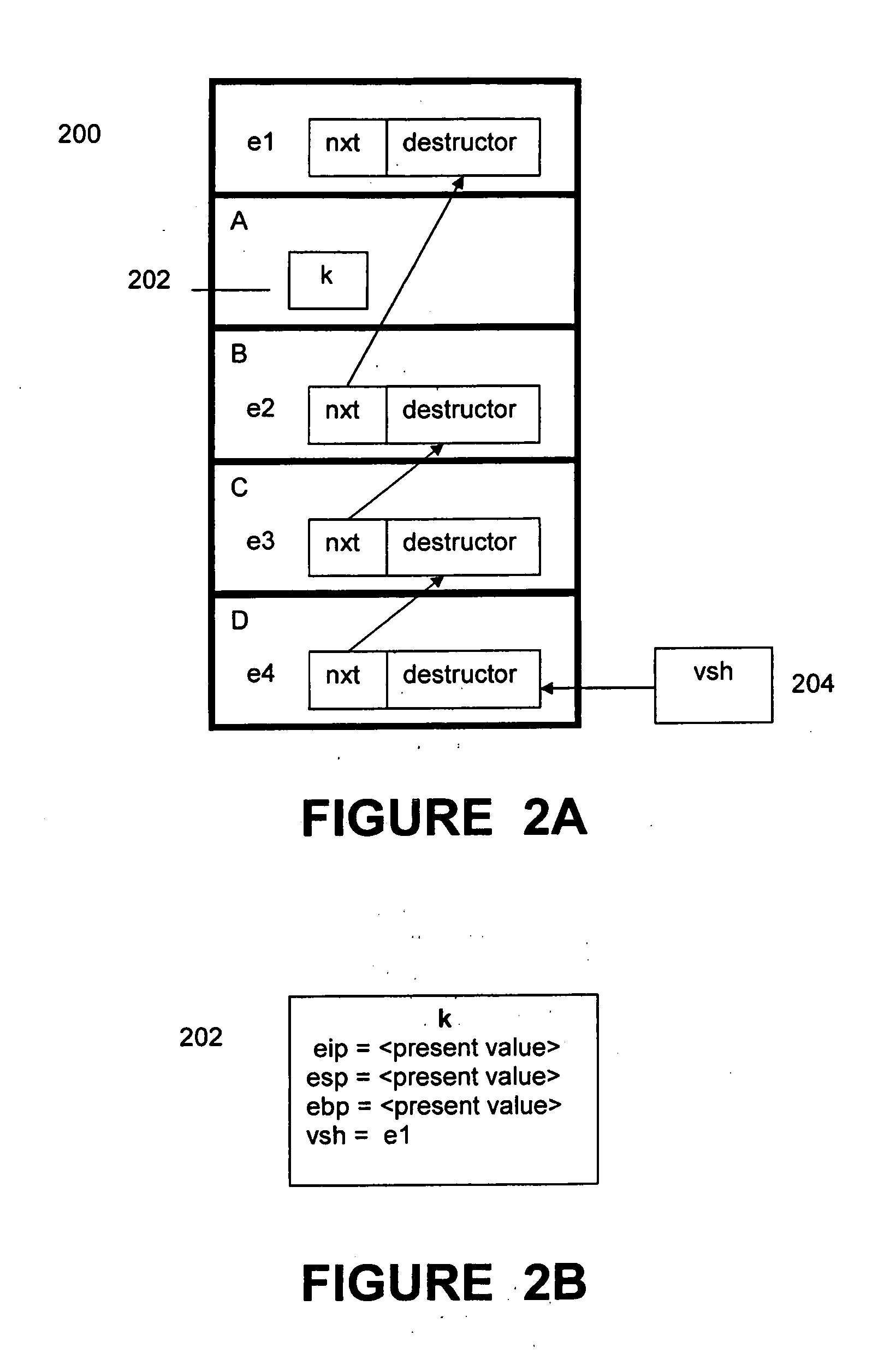Using a virtual stack for fast and composable stack cutting
a virtual stack and stack cutting technology, applied in the field of software programs, can solve the problems of stack cutting being a risky and dangerous construct, requiring great care, and being too expensive in terms of processor overhead
- Summary
- Abstract
- Description
- Claims
- Application Information
AI Technical Summary
Problems solved by technology
Method used
Image
Examples
Embodiment Construction
[0011]Embodiments described herein facilitate the use of fast stack cutting to be used in programming languages in a safe fashion even when composed with constructs that require destructor operations. For stack-based operations that require resolution through destructor operations (such as transactions, synchronization operations, deallocations, unlock operations, and so on) when a cut back is attempted, the destructor objects are stored in a virtual stack that is associated with the system stack. A container data structure stores an instantiation of the execution state at the cut back stack frame. A virtual stack head pointer stores the location of the last destructor in the virtual stack. During a stack cut operation, the virtual stack is first unwound to execute the destructor operations until the stack frame of the container is reached. The virtual stack mechanism generally provides a performance improvement over techniques like exception throwing whose cost is proportional to t...
PUM
 Login to View More
Login to View More Abstract
Description
Claims
Application Information
 Login to View More
Login to View More - R&D
- Intellectual Property
- Life Sciences
- Materials
- Tech Scout
- Unparalleled Data Quality
- Higher Quality Content
- 60% Fewer Hallucinations
Browse by: Latest US Patents, China's latest patents, Technical Efficacy Thesaurus, Application Domain, Technology Topic, Popular Technical Reports.
© 2025 PatSnap. All rights reserved.Legal|Privacy policy|Modern Slavery Act Transparency Statement|Sitemap|About US| Contact US: help@patsnap.com



